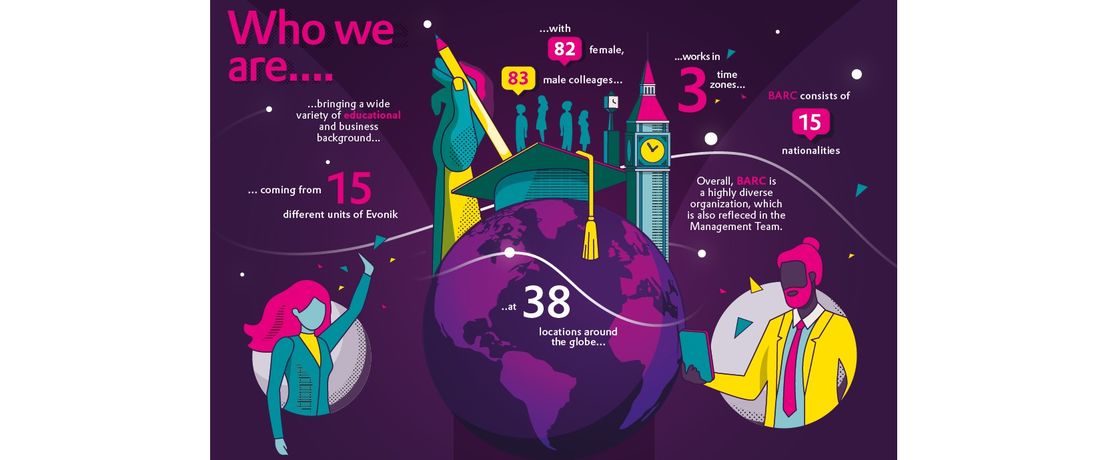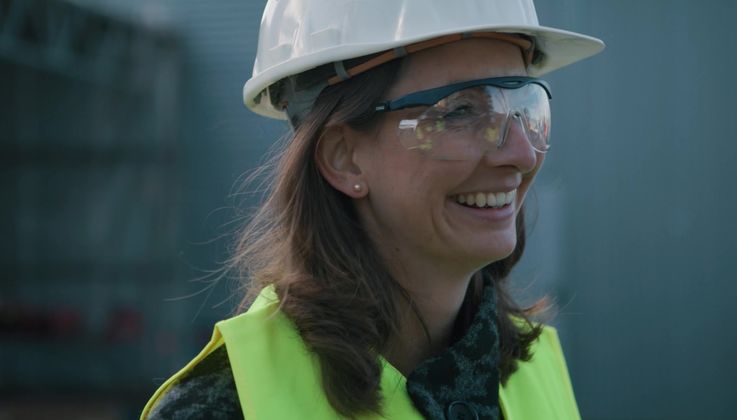
Diversity for unity
If the concept of diversity did not yet exist, it would have to be invented for BARC. And yet this new controlling unit at Evonik is tasked with reducing diversity — at least as far as analytical and reporting processes are concerned. That’s because diversity reduction is the key to data-based decision-making.
Digitalization is not a new phenomenon in itself. It started decades ago, together with the ascendancy of the computer. But the aspect of digitalization that’s changing today with tremendous impact is the huge expansion of connectivity. “Those who want to be fit for the future must create comprehensive connections between digital information. That’s the only way data develops its real value,” says Dag Torp. With these words he’s also describing the goal of the new controlling unit he heads: the Business Analytics & Reporting Center (BARC).
A close-knit unit
In order to connect the data silos within the company, BARC begins with the people involved: The organization interconnects about 160 controlling specialists worldwide. Torp systematically focuses on creating colorful diversity—the unit consists of 82 women and 83 men representing 15 nationalities at 38 locations. “BARC has an extremely diverse structure. And this is also reflected very deliberately in our management team. Many of our managers are firmly embedded in their regions. As a result, we are safeguarding our close connections with the regions as well as ensuring professional cohesion.” The initial aim of fostering this wide range of specialized knowledge is to create a unified information base throughout the company. “On this basis we can then standardize and automate reporting processes. That will lead to a considerable increase of efficiency and faster results,” explains Rafael Schaffrat, who heads the Reporting Center & KPI System at BARC.
New possibilities
Speed is one of the advantages that BARC is creating for Evonik. Another one is the increase of knowledge. “Having a consistent pool of data will create completely new possibilities for analysis, all the way to the use of artificial intelligence,” says Grace Wen, Head of Financial Analytics & Controlling at BARC. As a result, the Evonik business lines will receive more extensive information about the market, and that gives them more leeway to make strategic decisions. In order to take this next step, the process of creating a unified Group-wide pool of data must be completed. That’s what BARC is working on right now—flat out.
“GETTING MORE OUT OF OUR DATA”
Dag Torp talks about the new controlling unit at Evonik.
Mr. Torp, what is the purpose of BARC?
To help Evonik reach its financial goals. We can certainly get more out of the data that is gathered throughout Evonik if we collect it and analyze it according to uniform company-wide guidelines. That’s what we’re working on. The Reporting unit plays an important role here, because we are forging ahead with the development of standardized and automated solutions for all divisions, functions, and regions.
And what’s the task of the Business Analytics unit?
Take for example our central unit Financial Analytics. Here we are working out the controlling-relevant financial information at the product-country-customer level for our operational business units. Meanwhile, the Plant/Site Analytics unit focuses on business analytics at the plant level. In both of these subject areas, the standardization and harmonization of our data landscape are essential prerequisites for making our processes as efficient and effective as possible. The state-of-the art analytical tools that will be used in the future are expected to deepen our knowledge as well as significantly accelerate its acquisition.
You’ve built up this organization in a very short period of time…
That’s right. We launched the unit in October 2019. We’ve got over 160 employees all over the world, who come from the divisions and from units such as Procurement, HR, and IT, as well as the regional platforms and corporate controlling. That also makes BARC a huge integration project. I’m impressed by how respectfully the employees deal with one another and how they are contributing their diverse skills to our work.




